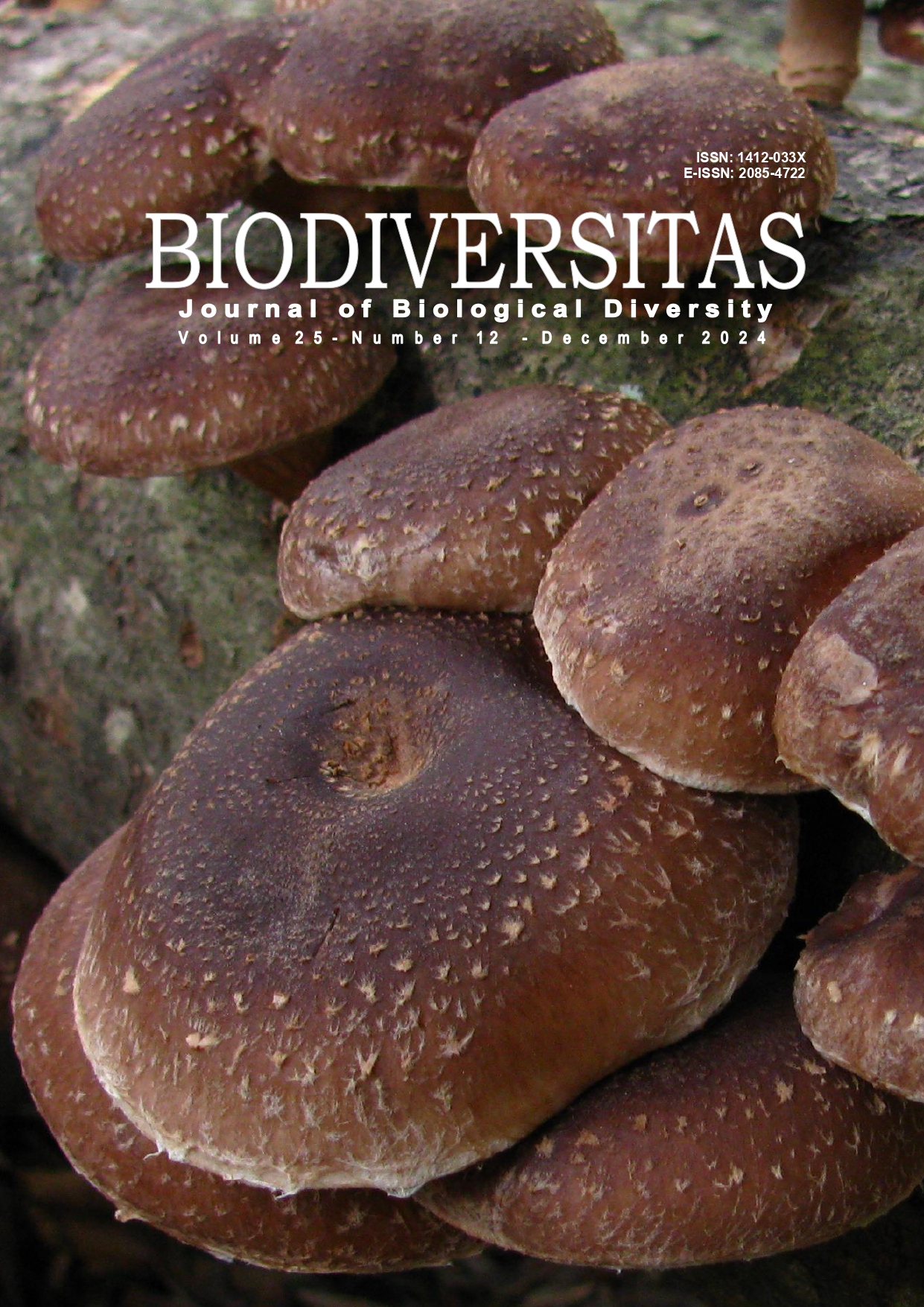The spillover effect of bird functional groups on oil palm smallholdings in Indonesia
##plugins.themes.bootstrap3.article.main##
Abstract
Abstract. Pradana DH, Patria MP, Yasman, Winarni NL. 2024. The spillover effect of bird functional groups on oil palm smallholdings in Indonesia. Biodiversitas 25: 5055-5062. In Southeast Asia, oil palm plantations are a major cause of deforestation, a situation that demands urgent attention. On the other hand, oil palm is important for the economy of Southeast Asian countries. Thus, there are attempts to develop sustainable palm oil production. The spillover effect of bird functional groups on oil palm smallholdings was studied in Indonesia from 14 September to 14 October 2022 and from 23 September to 20 October 2023. Whether birds at oil palm smallholdings provide insect pest control was also examined. The point count method was used to count birds at the oil palm smallholding, ecotone, and adjacent forest remnant at four oil palm smallholdings in Riau Province and two in Central Kalimantan. A bird exclosure experiment was used to examine whether birds provide insect pest control. The difference in bird abundance of the three habitat types was analyzed using the Kruskal-Wallis and Wilcoxon test as the post-hoc test. Wilcoxon test was also used to analyze the difference in herbivory rate of bird exclosure and control of oil palm leaflet seedlings. Carnivore birds showed lower abundance at the oil palm smallholdings than at the ecotone, indicating a spillover effect process. However, there was no significant difference between the herbivory rate of control and bird exclosure treatment, suggesting insect pest control service provided by birds dispersed to oil palm smallholdings could be more optimal.

